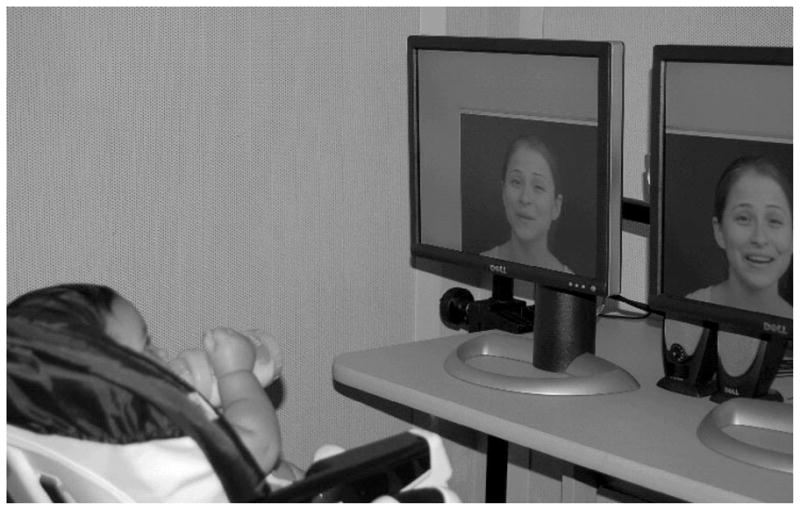Fig. 3.

The paired-preference cross-modal matching procedure. In the original version of the procedure, infants are seated in front of two side-by-side visual stimuli. These can be faces or objects that can be either static or moving. A sound that corresponds to one of the visual stimuli is presented concurrently. In the picture depicted here, the woman is seen producing two different utterances and the auditory track, which is presented concurrently through centrally placed speakers, corresponds to one of the visible utterances. The infant’s looking is monitored via a camera placed in the center. Typically, multiple such trials, each lasting anywhere between 30 s and 1 min, are given and the dependent measure is the amount of time the infant spends looking at each visual stimulus. Matching is inferred when looking at the corresponding visual stimulus is greater than looking at the non-matching one.
